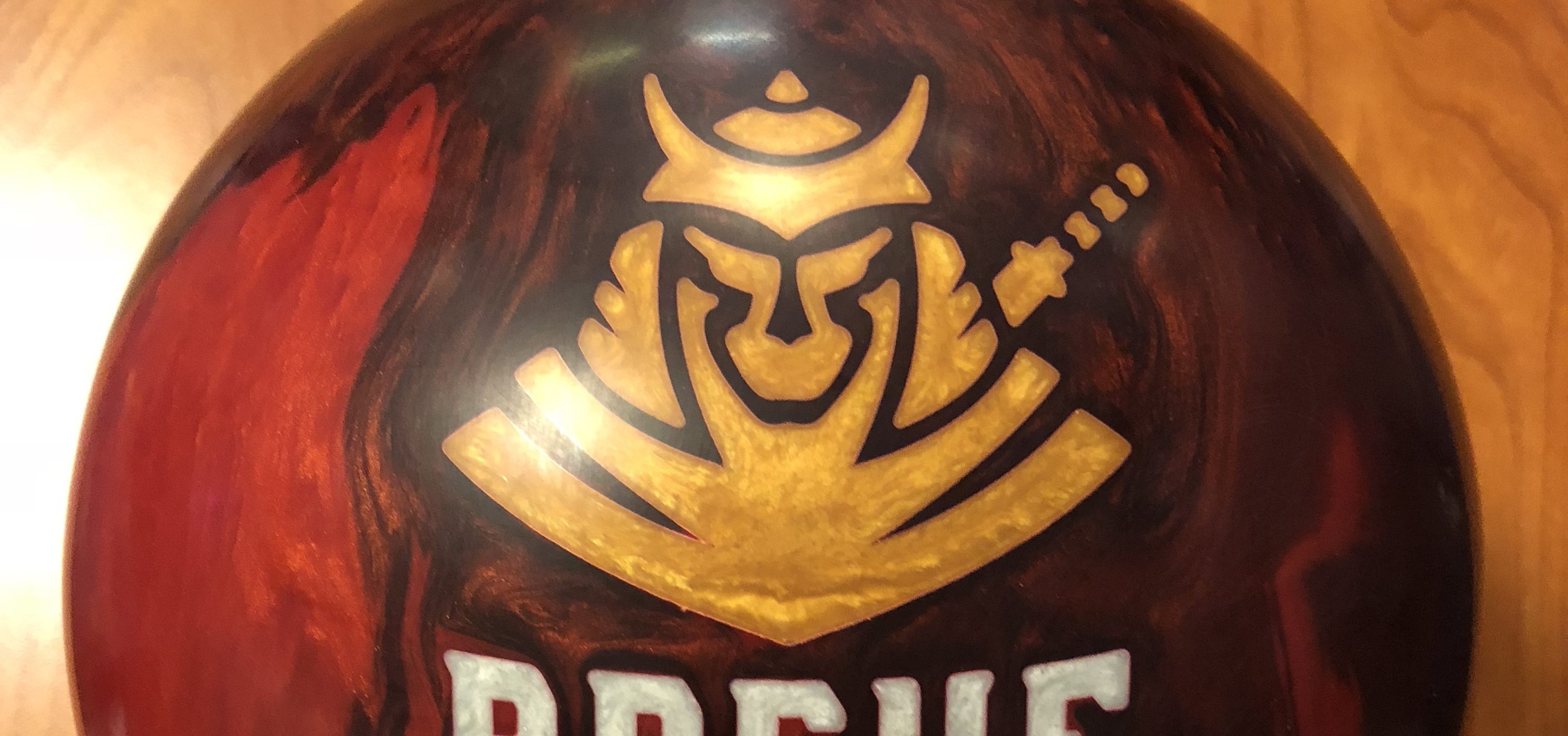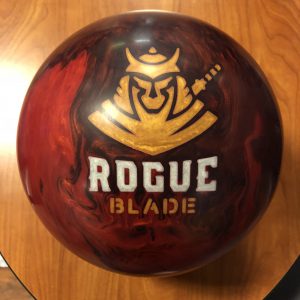The Blade Goes Rogue…
First Impressions
With all the talk about the Hexion coverstock, we’ve been somewhat longing for more aggressive reaction to dry from Motiv. The Rogue Blade hits the mark. It’s not only strong midlane but has more punch than we’ve seen from any other Hexion release.
Our Testers:
Tamer Elbaga (Lefty)
Style: Tweener
RPM: 375 rpm
PAP: 5 & 3/8 up
Average Speed: 18 mph (at release)
Axis tilt: low
Axis rotation: medium
Test Equipment: 14 Pounds
Layout: 65 x 5 x 40
Intent: Medium/long roll with a medium transition at the breakpoint
Sean Jensen (Righty)
Style: Power player
RPM: 475 rpm
PAP: 4 3/4; 3/8 up
Average Speed: 19 mph (at release)
Axis tilt: low
Axis rotation: medium
Test Equipment: 14 Pounds
Layout: 65 x 5 x 40
Intent: Medium/long roll with a medium transition at the breakpoint
Dave Staboleski (Righty)
Style: Speed/Rev Matched Stroker
RPM: 315 rpm
PAP 4 3/4 & 1/2 up
Average Speed: 17 mph (at release)
Axis tilt: low
Axis rotation: low
Test Equipment: 14 Pounds
Layout: 65 x 5 x 40
Intent: Medium/long roll with a medium transition at the breakpoint
Bryan Hoffman (Righty)
Style: Higher Tilt Stroker
RPM: 280 rpm
PAP: 4 1/4 & 1/8 down
Average Speed: 18 mph (at release)
Axis tilt: high
Axis rotation: medium
Test Equipment: 14 Pounds
Layout: 65 x 4.5 x 35
Intent: Medium roll with a slow transition at the breakpoint
Thanks to Greg Bickta and Perfect Aim Pro Shop for drilling our equipment.
Thanks to Limerick Bowl in Limerick, PA.
Buy the Motiv Rogue Blade at PerfactAimBowling.com.
“Keep in mind that coverstock accounts for 70% of ball reaction, but the core creates the dynamic shape of the reaction. Your driller will alter the shape to suit your game.”
Test Pattern:
THS: 40ft, 23ml
Sport: Red Square, 40ft, 25.16 ml, 1:1 ratio
Value
B+
The Motiv Rogue Blade is priced in the midrange but I believe this will be one of the more versatile pieces from Motiv.
Pair those 2 elements and you have really good value.
Specs
The Rogue Blade uses the venerable Sigma Core (Symmetric) core inside the new Hexion SE coverstock.
15 pound = RG of 2.47, diff of .047
14 pound = RG of 2.50, diff of .044
Overall
THS: B+
Sport: C+
I will start off by saying I’ve seen the Sigma core long enough to know this one is to Motiv what Enhanced V2 is to Ebonite. It works and works for a lot of people. Occasionally a cover can ruin an otherwise successful core but this isn’t a problem with the Motiv Rogue Blade. Right away, it’s a bit dull out of box. Doesn’t detract from anything. The ball has decent length, midlane that seems to be a hallmark for Motiv and a strong backend. I kind of liked the duller OOB because it was less skid/flip and gives some added midlane motion. Honestly, we’ve struggled a bit to understand the Hexion formulation as we had yet to find a ball we truly felt was angular as they claimed, that is until the Rogue Blade. We threw this one and thought, huh…OK! The next thing is to understand where it fits in the line up. It fits correctly as more angular than the Forza SS and is more ball than the Venom line. I found the ball to have a usable zone. I kept opening up my angles and moving in to see if I could “break it”. It surprised me a bit when it just seemed to completely hit a wall. It didn’t warn me when it had reached it’s limit. It was there, there, there, then not even close. That might be the shape of the pattern matched to this ball but that’s what I saw.
Compared to the Venom Shock Pearl, you can instantly see how much more ball the Rogue Blade is over the VSP. I had to move several boards left to see that smooth motion hit. Compared to the Sigma Sting, they were actually really close. On the house shot, fairly indistinguishable.
Sean was next. He found it to be a pretty strong ball and once he realized it, he got deep enough to see the real reaction. He saw both strong midlane and downlane reaction. With his rev rate, the midlane was more pronounced. He has grown accustomed to dealing with clean reactions with strong backend so he actually might like a touch less midlane for the house shot but he really had no trouble getting the Rogue Blade through the pins nicely. Again, he found the Sigma Sting quite close to the Rogue Blade. Sigma Sting looked a touch cleaner and a touch more angular. Minor difference. Compared to the Venom Shock Pearl, he saw the same board coverage but a less angular ball and even more midlane so he would pull the breakpoint in a bit with the VSP.
Next up is Bryan and overall he was satisfied with the motion. He’s got several Motiv balls and felt like this one hit the mark in terms of quicker response to dry. With the Rogue Blade he saw good length with a strong arcing motion downlane. To his eye, he could trust that aggressive move when it counts the most. He had some forgiveness missing out as the ball would arc back harder off the dry. Misses in did not tend to hold pocket and that’s also characteristic of strong downlane motion. You have to rethink your “miss room” depending on the type of ball you are throwing. Compared to the Sigma Sting, he saw a bit sharper reaction off the dry as it played a touch cleaner.
Finally Dave tests the Motiv Rogue Blade. He had a great ball reaction, getting enough length with the concentration of power increasing as the ball gets down lane through the phases. Good midlane read and smooth but strong transition. The ball rarely felt like it wouldn’t make it’s way back to the pocket. Misses in were fairly forgiving leaving 4 pins so he had balanced miss room in either direction. As with the rest of us, the Rogue Blade was stronger and more angular than the Venom Shock Pearl. Compared to the Sigma Sting, again they were really close with the Sting being just a touch longer and a touch more angular.
Sport Shot
We tested on a flat 40 ft Red Square pattern. This was a fresh pattern and I found the Rogue Blade too strong and too angular to use on this flat pattern. I couldn’t play my normal trajectory on this pattern and it felt like no matter how deep I got, it was either too much or I blew threw the breakpoint. I found a more direct line to take advantage of the angularity from the outside that’s typically out of bounds due to how tight the pattern is. Sean can make the Rogue Blade work in his normal zone taking advantage of the downlane strength the Blade offers. It’s still on the strong side so hard to say how long it would stay in play on a flat pattern. For Bryan the ball is a bit too angular to use on this tough pattern. It was hard to envision a sport pattern Bryan would pull this ball out on. For Dave, with his lower axis rotation, you could see him use this type of ball that strong downlane because the lower rotation controls the side to side motion.
Final Thoughts
We had a pretty good feel for the Rogue Blade. This particular coverstock formulation actually accentuates the Sigma sting core motion. We saw a fairly clean ball but just enough readable midlane with strong backend motion. The backend motion is one we’ve been craving of late from Motiv and they delivered. I wouldn’t call this ball skid/flip but it is one of the stronger backend motions from the Motiv brand. The Sigma core is a well-known entity and we could see the Rogue Blade being even more successful than the Forza SS as it has more length, more stored energy, enabling a strong downlane flip that we believe will increase carry on your typical house shots.


